Safe and sound is how one can describe an object after conservation treatment such as the recent restoration of a historic safe door by Stefan Dedecek, Conservator of Paintings, Murals, and Polychrome Surfaces, of McKay Lodge Conservation Laboratory located just outside of Cleveland, Ohio.
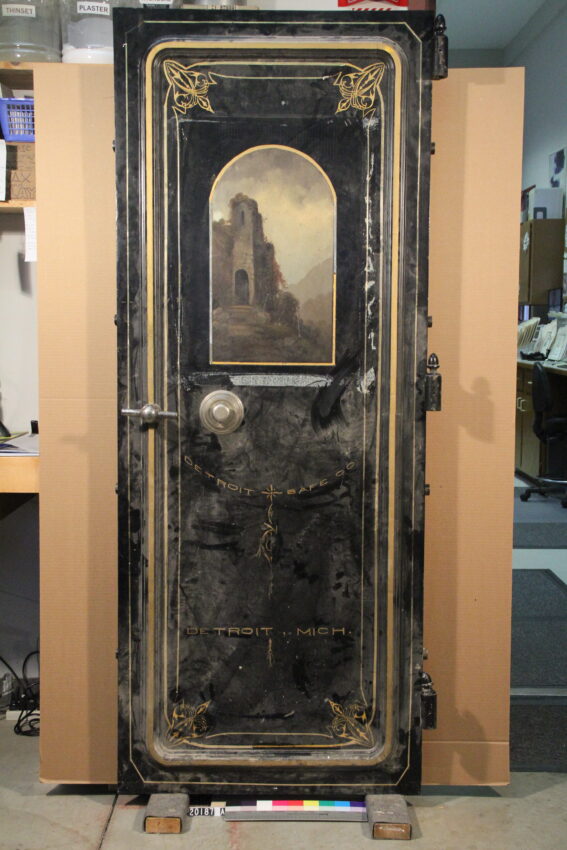
The historic safe door is marked by a decoration and elegance not often seen with modern safes. The safe was fabricated by the Detroit Safe Company of Detroit, Michigan. It is painted black with gold scrollwork. The front upper half of the door also features a picturesque painting of a natural landscape.
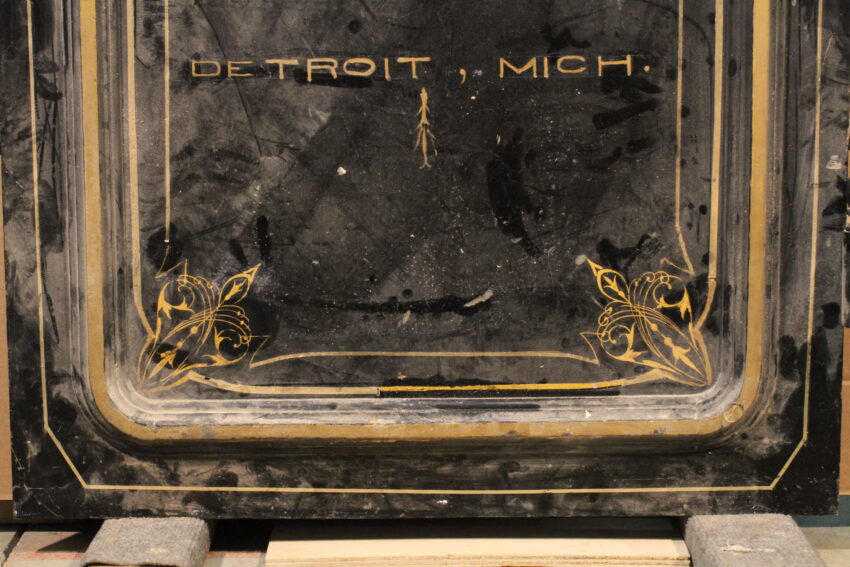
The historic safe door is as heavy as it looks, taking more than four individuals to comfortably move and rotate the object for treatment.
The restoration of the historic safe door requires someone with great experience treating painted surfaces like conservator Stefan Dedecek. The safe door has had a number of restoration campaigns in the past, flaking paint and losses, some physical damage, and corrosion of the metal substrate. The condition issues are certainly not unusual, especially for a functional object that is a over a century old.
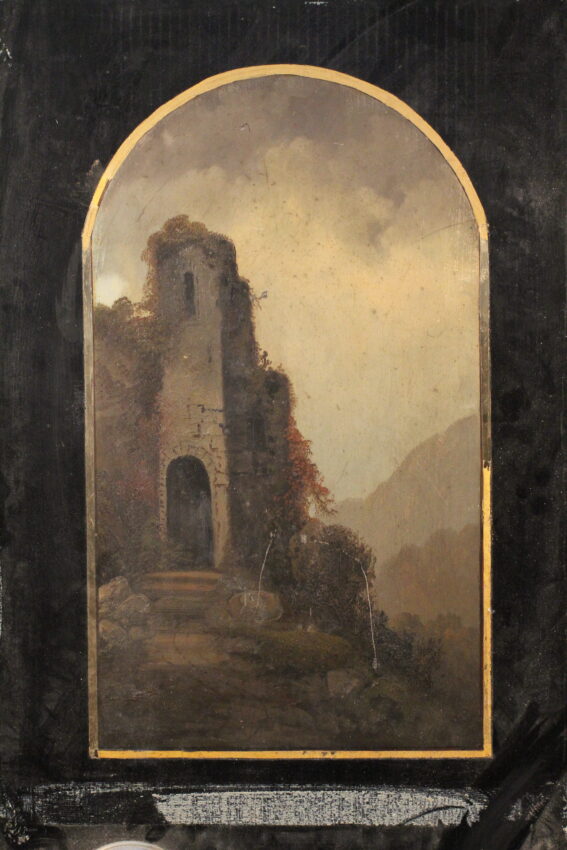
Flaking paint was consolidated and corrosion treated as needed. Previous restoration campaigns resulted in the door being completely overpainted. For some treatments where there is significant overpaint, restoration materials can be removed without negatively affecting the original layers underneath. Unfortunately, for the restoration of this historic safe door, the solubility parameters between restoration overpaint and original paint were too similar.
While dirt and accretions could be safely removed with solvent mixtures revitalizing the framed landscape, most of the black overpaint had to remain. Gold overpaint and metallic tape on gold scrollwork, however, could be removed. Cleaning revealed the original lines of the artist.
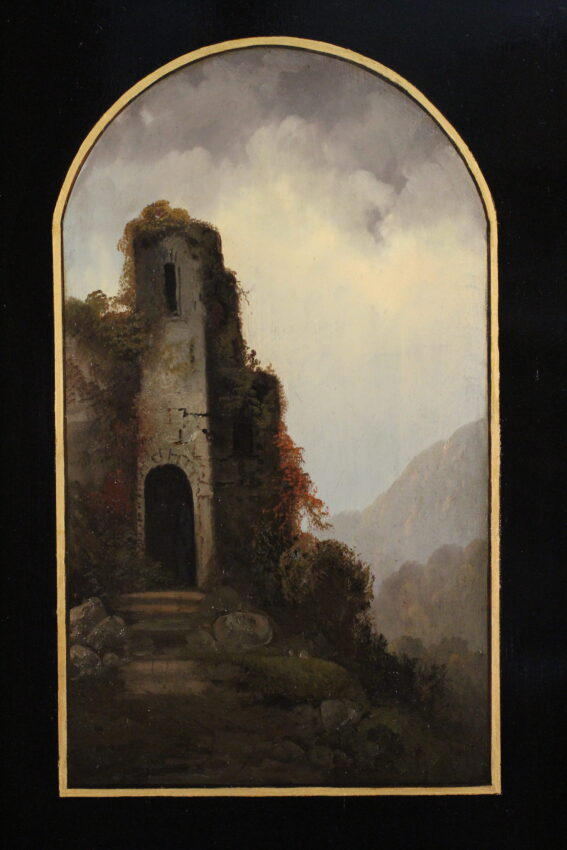
Paint losses and surface inconsistencies were retouched with acrylics. The fine gold scroll-work was inpainted as needed with a gold acrylic paint. The surface was then varnished, resaturating and homogenizing the black painted areas.
Metal corrosion was treated then painted, and polished bare metal elements like the dial wheel and handle were clear-coated.
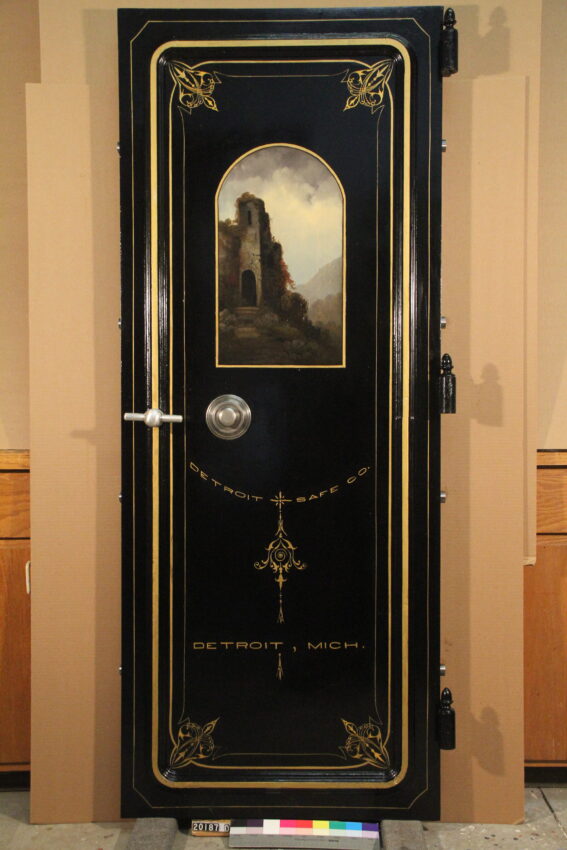
One of the physical damages included the acorn-shaped hinge which had been bent at some point. The hinge was carefully worked back into its original shape then painted to match the other installed hinge. A final protective varnish was applied to the painted elements.
After treatment the safe door appears revitalized. Layers of grime, adhesive residue, and overpaint have been reduced. The safe door can now be reinstalled in its original location, safe and sound.
